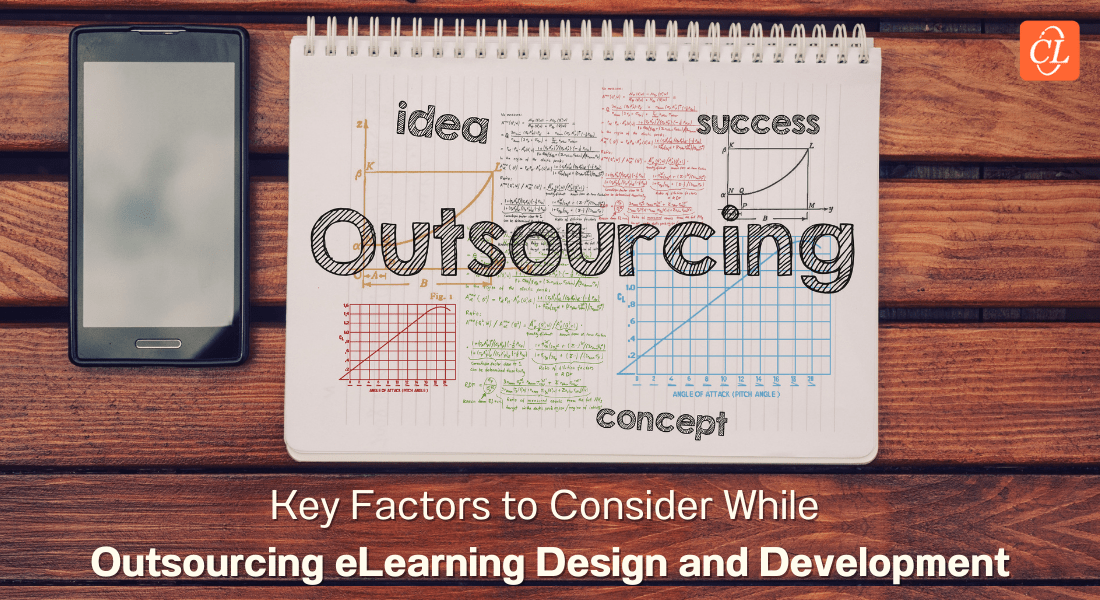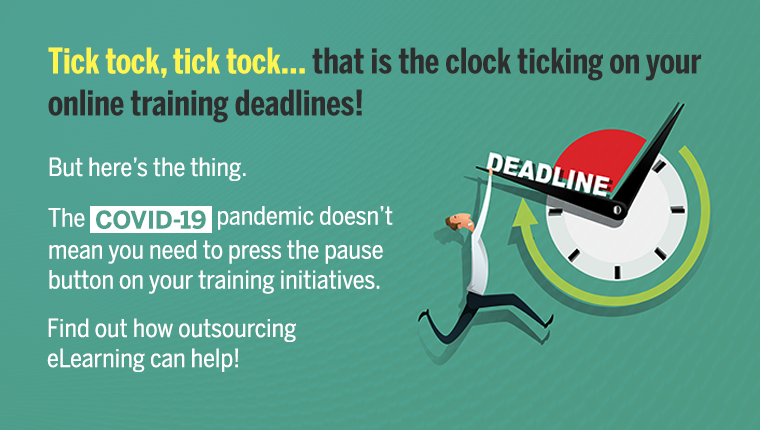Why Should You Outsource Face-to-Face Material to E-learning Conversion?

Over the past few decades, a lot of organizations – both small and mid-size – have reacted positively to online learning and have moved toward rendering training through the eLearning mode. There is an increasing need today to convert classroom training (or instructor-led training) to interactive and effective online learning modules, thanks to the various benefits customized e-learning courses offer: cost-effectiveness, learner-centricity, time, and accessibility being the biggest advantages.
Many companies hire eLearning vendors, who with their years of expertise in learning & design and using the latest authoring tools produce online learning that is tailored to the company’s business and training requirements. Outsourcing the conversion from ILT to eLearning is simple yet it is something that needs the right expertise to be advantageous. In this blog, I will discuss a few benefits that outsourcing the conversion of classroom training to eLearning can bring to the table.
1. Fills gaps and gives a proper structure to your material scattered across different sources
The classroom material – PPTs or manuals – you have may not always be enough for a full-scale eLearning course development. Simply publishing the PowerPoint presentations used in the classrooms (which contain only 50% of the actual content taught; the rest is conveyed by the trainer/instructor) will not do the job. Doing so will result in a poor knowledge transfer that may lead to gaps in the content (and learning).
Gather relevant training materials – either PowerPoint decks, eBooks, PDFs, manuals, Word Documents, or lecture recordings. These will then be used by the outsourcing vendor to conduct a thorough needs analysis to see which of them could be converted to eLearning. Instructors and Subject Matter Experts (SMEs) need to come together and work in tandem with the vendor to fill the gaps wherever needed, and give it an appropriate structure.
Experienced vendors will also factor the audience that is going to take the eLearning course. This will determine how to deliver the content – computer-based learning, mobile learning, or blended learning. For instance, salespeople who are on the move 24X7 may be well adjusted to mobile learning, giving access to learning on the go.
2. Fortify it with a relevant ID strategy –based on training type and learner profile
Once you have gathered the content needed, the next step is to formulate a good instructional strategy. If an appropriate strategy is not employed, then it might mislead the learner from the course and result in an unproductive course. An instructional design strategy is a high-level method of how to teach a concept or topic to the learners in a particular environment.
The criterion for selecting a good vendor is not just to see whether they have a plethora of instructional strategies in their kitty, but whether the vendor knows what kind of strategy to apply to a specific training. For instance, safety training or compliance training is more effective when a scenario-based instructional strategy is employed, exposing learners to real-world problems and the consequences of their decisions.
3. Authoring tool and development expertise to rollout quickly
The whole point of outsourcing the ILT to eLearning conversion is the instant access to vendor expertise. It cuts down the costs for manpower, the operating costs, and training costs. Hiring an eLearning vendor encompasses access to learning experts and the latest learning technologies, leading to a high-quality product.
Vendors have in-house courseware developers who use the latest rapid authoring tools such as Articulate Storyline, Adobe Captivate, Lectora Inspire, iSpring – to design the eLearning you want. More importantly, they do it in a fraction of time.
4. Good development and QA processes to ensure a product without glitches
There are various checks and measures that eLearning vendors take to ensure that the framework – the conversion from face-to-face courses to online interactive courses – is strong. A good vendor will have a proper and continual communication with you and will work across time zones. The quality of the eLearning course is ensured at every step of the process, ensuring the course is rolled out without any glitches, creating valuable learning experiences.
5. Translation support (and LMS support, if needed)
Along with converting ILT to eLearning, you may also want to check if the vendor offers translation and LMS support. Companies with employees spread across the world, are choosing to translate their e-learning courses. This eases communication, helps employees deal with global clients, and helps gain ground on competitors.
A good eLearning vendor gives a complete package that includes a Learning Management System (LMS). An LMS is a repository for your eLearning courses, which helps you control the administering and delivery of courses. The most important advantage of using an LMS is its reporting feature, keeping a track of the learners’ activity.
If done right, e-learning is more beneficial for a company’s training needs. However, it is also important for a company to closely evaluate their business needs and goals before taking the plunge and converting from ILT (face-to-face) to eLearning. Keeping these tips in mind will help you create a training program that best meets the needs not only of your learners, but your organization’s as well.




![What are the Key Factors for Successful eLearning Outsourcing? [Infographic]](https://blog.commlabindia.com/hubfs/blogs/key-factors-success-elearning-outsourcing-inf.jpg)
